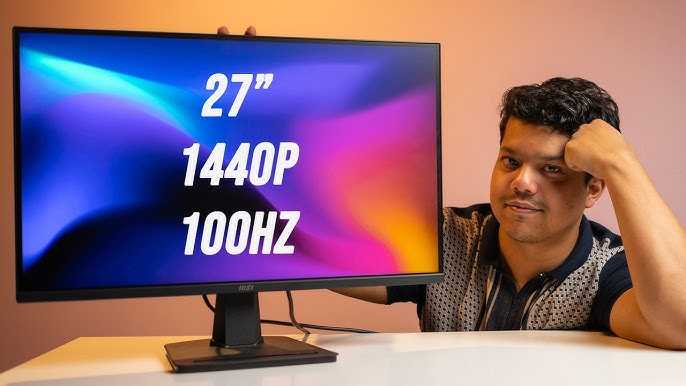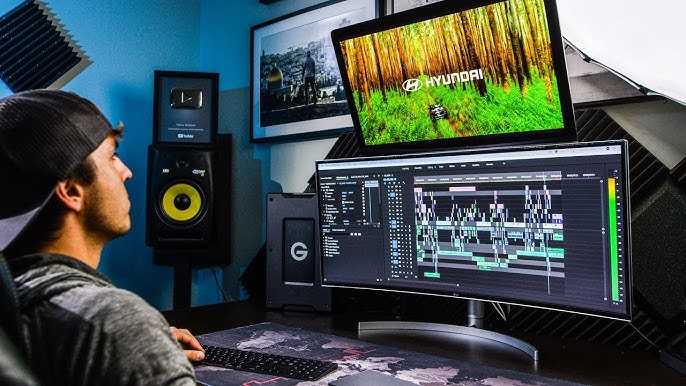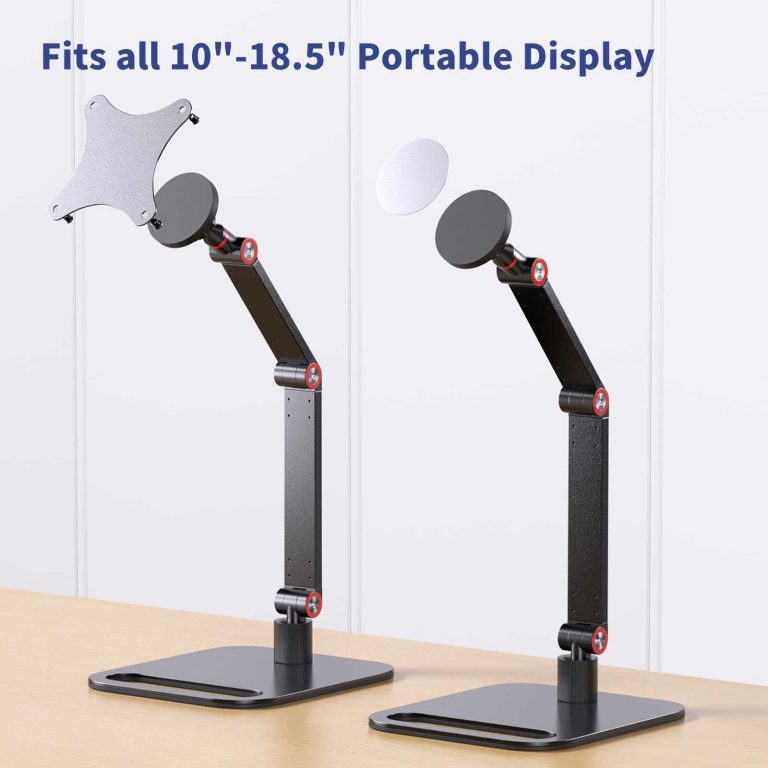A 100Hz monitor can definitely handle casual gaming, but if you’re aiming for ultra-smooth, competitive play, you might want to consider higher refresh rates. For most gamers, especially those not playing fast-paced shooters or esports titles, a 100Hz display offers a noticeable upgrade over standard monitors. It provides smoother visuals and a more immersive experience without breaking the bank. However, for those who want to push their skills or enjoy the latest titles at the highest levels, monitors with 120Hz, 144Hz, or even 240Hz might be better suited. Ultimately, whether 100Hz is enough depends on your gaming style and expectations, but for many players, it hits the sweet spot between performance and affordability.
A 100Hz monitor is generally sufficient for most casual and mid-level gaming scenarios, offering smoother visuals than standard 60Hz screens. While it may not match the ultra-high refresh rates favored by competitive gamers, it still provides an enjoyable experience. Whether it’s enough depends on your gaming preferences, but for everyday gaming, 100Hz can be a good balance of performance and cost.
Is 100Hz Monitor Enough for Gaming?
Understanding Refresh Rates and Why They Matter
A monitor’s refresh rate shows how many times per second it updates the image on the screen. Higher refresh rates mean smoother motion, which can make fast-paced games look more fluid. Many gamers wonder if 100Hz is sufficient, especially as some monitors offer 144Hz or higher.
How 100Hz Compares to Other Refresh Rates
Compared to standard 60Hz monitors, a 100Hz display delivers noticeably smoother gameplay with less motion blur. While 144Hz and above are popular for competitive gaming, 100Hz strikes a good balance between performance and affordability. This refresh rate is often enough for casual gamers who do not play at the highest competitive levels.
Impact on Gaming Experience
A 100Hz monitor can enhance your gaming experience by reducing motion lag and tearing. It offers a much better visual flow than 60Hz monitors, making games feel more responsive. For many gamers, especially those who don’t require ultra-high refresh rates, 100Hz provides a satisfying level of smoothness.
Does CPU and GPU Power Influence Performance?
Your gaming performance on a 100Hz monitor depends heavily on your computer’s hardware. A powerful CPU and GPU help achieve higher frames per second (FPS), making the extra refresh rate worthwhile. If your system struggles to reach high FPS, a high refresh rate monitor may not provide noticeable benefits.
What FPS Should You Aim For?
To make the most of a 100Hz monitor, aim for at least 100 FPS in games. Achieving close to your monitor’s refresh rate ensures smooth visuals and reduces input lag. If your system can’t hit 100 FPS consistently, the benefits of 100Hz diminish.
Fast-Paced Games and 100Hz Monitors
Games like first-person shooters or racing titles benefit from higher refresh rates. A 100Hz monitor improves reaction times and visual clarity during intense moments. However, in highly competitive environments, gamers often prefer 144Hz or more to gain an edge.
Is 100Hz Enough for Competitive Gaming?
For casual players or those new to gaming, 100Hz is generally sufficient. It offers a great balance between performance and cost. However, professional or highly skilled gamers might favor 144Hz or higher for the extra responsiveness.
Cost and Availability of 100Hz Monitors
Compared to 144Hz models, 100Hz monitors tend to be more affordable. They are widely available across different brands and sizes. This makes them an attractive choice for budget-conscious gamers who still want a good gaming experience.
Additional Features to Consider
When choosing a 100Hz monitor, look for features like low input lag, adaptive sync technology (such as FreeSync or G-Sync), and good resolution. These features enhance gaming performance and reduce artifacts like tearing or stuttering.
Future Proofing and Upgradability
While 100Hz suits current gaming needs, consider your long-term plans. Upgrading to a higher refresh rate monitor may be worthwhile in future years as games become more demanding. Also, ensure your hardware can support higher FPS for the best experience.
Related Topics
- How does G-Sync and FreeSync improve gaming?
- Differences between 60Hz, 100Hz, and 144Hz monitors
- Best graphics settings for smooth gaming at 100Hz
- Impact of resolution on gaming performance
Summary
A 100Hz monitor provides a significant leap over 60Hz displays, resulting in smoother, more responsive gameplay. While not as fast as 144Hz or higher monitors, it is often enough for casual and enthusiast gamers. Your experience will depend on your hardware and the types of games you play, but for many users, 100Hz offers a very satisfying gaming experience.
By understanding the strengths and limitations of a 100Hz monitor, you can decide if it fits your gaming needs. It bridges the gap between affordability and performance, making it a reliable choice for many players. As gaming technology advances, you might consider higher refresh rates, but for now, 100Hz remains a solid option.
60 hz 100hz 120hz and 144hz screen 🖥🖥 monitor
Frequently Asked Questions
Does a 100Hz monitor provide smooth gameplay for fast-paced games?
Yes, a 100Hz monitor offers smooth motion for most fast-paced games. It updates images 100 times per second, reducing motion blur and lag compared to lower refresh rates. While not as high as 120Hz or 144Hz monitors, it still delivers a responsive and visually comfortable experience for many gamers.
Can a 100Hz refresh rate handle competitive gaming effectively?
For casual and some competitive gaming, a 100Hz monitor can perform well. It provides quick reactions and clear visuals, which are essential in fast-action games. However, professional gamers often prefer higher refresh rates like 120Hz or 144Hz to gain an edge through even smoother motion.
Is there a noticeable difference between 100Hz and higher refresh rate monitors?
Many users notice a difference when moving from 60Hz to 100Hz, such as smoother gameplay and reduced motion blur. The jump from 100Hz to higher rates like 144Hz can be even more evident, especially in high-speed scenarios. Choosing a higher refresh rate depends on your gaming preferences and sensitivity to motion clarity.
Would upgrading from a 100Hz to a 144Hz monitor improve gaming experience?
Upgrading from 100Hz to 144Hz generally results in even smoother visuals and faster response times, which can enhance gameplay experience, especially in competitive titles. If you seek improved reaction times and more fluid motion, moving to a higher refresh rate monitor offers noticeable advantages.
Is a 100Hz monitor suitable for casual gaming and entertainment?
Absolutely. A 100Hz monitor provides smooth visuals that enhance casual gaming, movies, and general computer use. It balances performance and cost-effectiveness, making it a solid choice for users who want a good experience without investing in higher-end gaming displays.
Final Thoughts
A 100Hz monitor offers smooth visuals suitable for casual gaming and fast-paced titles. It provides a noticeable improvement over lower refresh rates, ensuring a more responsive experience. However, competitive gamers may prefer higher refresh rates like 144Hz or more for optimal performance.
In conclusion, is 100Hz monitor enough for gaming? For many players, yes, especially in casual settings. It balances performance and affordability effectively, making it a solid choice for general gaming needs.
I’m passionate about hardware, especially laptops, monitors, and home office gear. I share reviews and practical advice to help readers choose the right devices and get the best performance.






